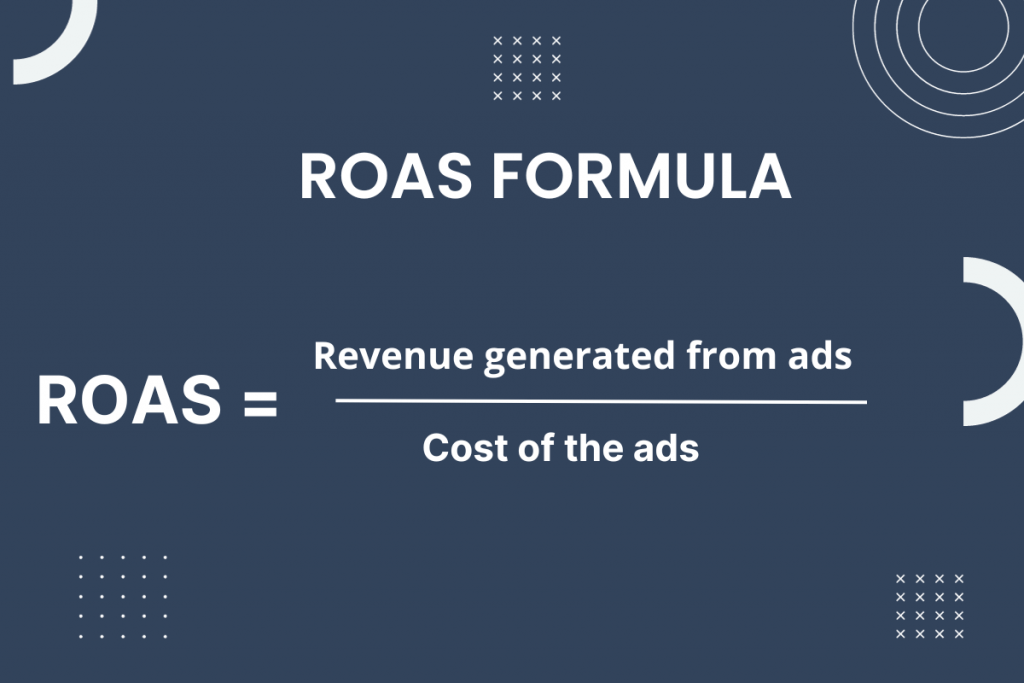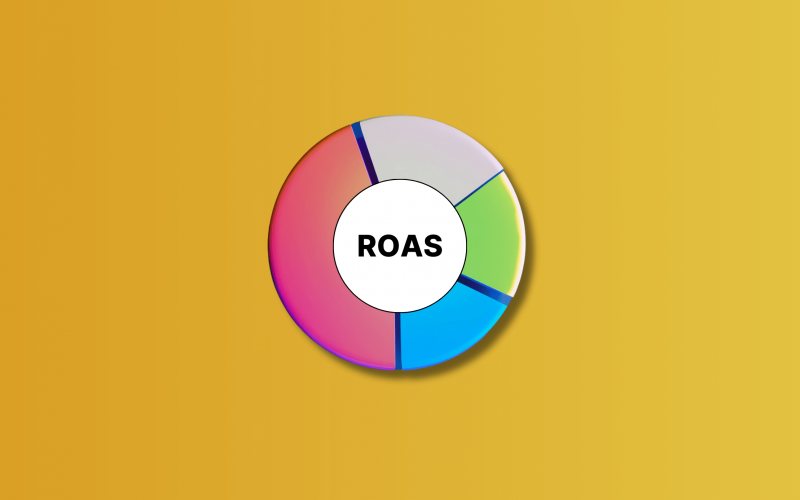As a beginner in the world of advertising, it can be overwhelming to figure out how to get the most out of your budget. You want to make sure that every dollar you spend towards ads is actually generating the revenue that you’re looking for. That’s where ROAS comes in.
ROAS, or Return on Ad Spend, is a crucial metric that helps you make informed decisions about which ads to invest in and which ones to cut.
In this beginner’s guide, we’ll break down the basics of ROAS and show you how to calculate it. We’ll also provide you with useful tips and tools so you can start maximizing your advertising budget and achieve the results you want for your business.
Are you an ecommerce merchant looking for data-driven business insights? Get your ecommerce-tailored KPI metrics with Synder Business Insights.
Contents:
- Key metrics that help determine ROAS
- How to calculate ROAS: An example
- How to calculate ROAS without revenue?
2. How to calculate ROAS in Excel
3. What is a good ROAS? Setting ROAS benchmarks for your business
5. Tools for tracking and measuring your ROAS
6. Monitoring business performance with Synder Insights
ROAS: Return on Ad Spend
Before we dive into the details of calculating ROAS and maximizing your advertising budget, let’s first make sure we understand the basics.
ROAS is a metric that helps you understand how much revenue your advertising efforts are generating in relation to the amount of money you’re spending. In other words, ROAS informs you how much revenue every dollar you spend on ads brings you.
One of the key benefits of ROAS is that it helps you evaluate the effectiveness of your advertising campaigns. By knowing your ROAS, you can quickly determine which campaigns are best at generating revenue and which ones are not. Zeropark, a performance marketing platform, helps advertisers reach their target audiences through a self-serve ad exchange. This information allows you to adjust your advertising budget accordingly and focus on the campaigns that are delivering the best results.
It’s important to note that ROAS isn’t the same as ROI, or Return on Investment. ROI takes into account all of the costs associated with a campaign, while ROAS only looks at the advertising spend. However, ROAS is still an important metric that can help you make informed decisions about your advertising budget.
ROAS formula
ROAS = Revenue generated from ads / Cost of the ads
ROAS itself is a ratio of revenue generated from ads to the cost of those ads. To calculate it, you need two primary metrics:
Revenue generated from ads: This refers to the total revenue or sales that you’ve directly attributed to your advertising efforts. It’s the money you’ve made from the customers who clicked on your ads and then made a purchase or engaged in some other monetizable action.
Cost of the ads: This is the total amount you’ve spent on the advertising campaign in question. It includes ad spend, platform fees, and any associated costs in the creation and distribution of the ads (though some advertisers only account for the direct ad spend).
So the formula for ROAS looks as follows:
ROAS = Revenue generated from ads / Cost of the ads

Key metrics that help determine ROAS
While the above formula is based on the direct metrics to calculate ROAS, several other metrics can influence and provide context to ROAS:
- Click-Through Rate (CTR): The percentage of users who click on your ad after seeing it. A higher CTR can indicate more effective ad creatives or targeting.
- Conversion rate: The percentage of users who take a desired action (like making a purchase) after clicking on your ad. A good conversion rate can amplify your ROAS.
- Cost Per Click (CPC): The average amount you pay each time someone clicks on your ad.
- Cost Per Conversion/Acquisition (CPA): The average amount you pay for each conversion or sale that results from your ad.
- Average Order Value (AOV): The average amount customers spend when they make a purchase. Increasing AOV can boost the revenue side of your ROAS calculation.
- Customer Lifetime Value (LTV): The projected revenue from a customer over the entire future relationship with your business. Businesses with high LTV might be willing to accept a lower immediate ROAS because they expect more revenue in the long run.
- Ad impressions: The number of times your ad was displayed. It can help you understand the reach and frequency of your ad campaigns.
- Quality Score (specific to Google Ads): It’s a measure of the quality and relevance of your ads, keywords, and landing pages. A higher quality score can lead to lower CPCs and better ad positions.
Understanding these supplementary metrics allows business owners, marketers, or advertisers to optimize campaigns for better ROAS. For example, by improving ad creatives to increase CTR, refining landing pages to enhance conversion rates, or tweaking targeting to decrease CPC businesses can increase their ROAS values.
Find out what data analytics in ecommerce includes.
How to calculate ROAS: An example
Let’s walk you through a practical example of how to calculate ROAS.
Scenario
Suppose you’re running an online clothing store and have recently started a Facebook ad campaign to promote your new summer collection.
Data
Cost of ads: You spent $1,000 on your Facebook ad campaign.
Revenue from ads: The campaign drove sales and you made $5,000 from customers who directly came through the Facebook ad.
Since the formula for ROAS is ROAS = Revenue from Ads / Cost of Ads, then in our example, it will look as follows:
ROAS = $5,000 / $1,000
ROAS = $5
This means for every dollar you spent on the ad campaign, you made $5 in revenue. In other words, the campaign returned 5 times the investment you made in ad spend.
In percentage terms, this would be a 500% return on your ad spend.
ROAS Analysis
A ROAS of 5 (or 500%) is generally considered strong, but the “goodness” of this number can vary based on industry benchmarks, profit margins, and business objectives. If, for instance, the profit margin on the $5,000 revenue is low, then even a 5x return might just cover costs and not be as impressive. Conversely, with high margins, this ROAS would indicate a very profitable campaign.
How to calculate ROAS without revenue?
If you don’t have your revenue data at hand, you can calculate it using other metrics. Let’s look at the following example.
Given metrics
Cost of ads: $1,000
Clicks from the ad campaign: 10,000
Conversion rate: 2% (This means 2% of those who clicked on the ad made a purchase)
Average Order Value (AOV): $50 (The average amount a customer spends when they make a purchase)
Steps to calculate revenue using conversion rate
- Calculate the number of conversions/sales:
Number of Sales = Clicks × Conversion Rate
Number of Sales = 10,000 clicks × 2/100 = 200 sales
- Calculate the total revenue from those sales:
Total Revenue = Number of Sales × Average Order Value
Total Revenue = 200 sales × $50 = $10,000
Calculate ROAS
Now that we have the revenue value, we can proceed with the usual formula.
If ROAS = Revenue from Ads / Cost of Ads, then in our example, it’ll look as follows:
ROAS = $10,000 / $1,000
ROAS = $10
This means for every dollar you spent on the ad campaign, you made $10 in revenue or a 1,000% return on your ad spend.
So, while the conversion rate itself doesn’t directly provide ROAS, it can be a crucial component in the calculation when paired with other key metrics like clicks and average order value.
How to calculate ROAS in Excel
Calculating ROAS in Excel is straightforward once you have the necessary data. Let’s look at the process step by step:
Step 1. Data input
Open a new Excel sheet. In cell A1, type “Cost of Ads”. In cell B1, type “Revenue from Ads”.
Input your data. From A2 downwards, input the cost of your ads. From B2 downwards, input the corresponding revenue generated from those ads.
Step 2. Calculate ROAS
In cell C1, type “ROAS”. In cell C2, input the formula =B2/A2. This formula divides the revenue by the cost to give you the ROAS for each row of data.
Click on the bottom right corner of cell C2 (you’ll see a small square or “handle”). Drag this down to fill in the ROAS for all your data rows.
Step 3. Formatting (optional)
To view ROAS as a percentage, highlight column C, right-click, and choose ‘Format Cells’. Then, choose ‘Percentage’ and set your desired number of decimal places.
If you want to get an average ROAS for multiple campaigns or time frames, at the bottom of your ROAS column (let’s say C3 if you have two data rows), type =AVERAGE(C2:C[last row of your data]).
Remember, the ROAS figure you get represents the return for every unit of currency spent on advertising. For example, a ROAS of 4 (or 400% if you’re looking at it in percentage terms) means that for every dollar spent on advertising, you returned $4 in revenue.
What is a good ROAS? Setting ROAS benchmarks for your business
Now that you know how to calculate ROAS, the next step is to set benchmarks for your business. However, a one-size-fits-all approach isn’t ideal. Let me break down the factors you should consider when evaluating the success of your campaigns through the lens of ROAS.
First, it’s important to understand that a ROAS of 1 means that you’re breaking even on your advertising spend. Anything above 1 means you’re generating a profit, while anything below 1 means you’re losing money on your advertising efforts.
A “good” ROAS can vary by industry, marketing channels, and the specific goals of a campaign. However, a general rule of thumb is that a ROAS of 4:1 or higher is typically considered a strong one. For every $1 spent on advertising, the business brings in $4 in revenue.
That being said, the desired ROAS can be different based on various factors. Let’s review them.
Industry context
Begin by assessing the typical margins and performance benchmarks within your industry. Some industries inherently possess higher profit margins and can operate successfully with a lower ROAS. For instance, luxury goods may have such substantial margins that even a lower ROAS is satisfactory. On the flip side, if you’re in an industry with razor-thin margins, like certain retail sectors, you might aim for a considerably higher ROAS to ensure profitability.
Purpose of your campaign
Align your ROAS expectations with the objectives of your advertising campaign. If you’re venturing into an awareness campaign, targeting a broader audience to increase brand recognition, or capturing leads for services with longer sales cycles, then a lower ROAS might be in order. However, if you’re running a direct-response campaign with a clear intent to drive immediate sales, you’ll likely want a higher ROAS to justify the expenditure.
The advertising medium matters
Different marketing channels offer varied ROAS benchmarks. While search ads might give you one kind of return, social media ads could present a different picture altogether. Familiarize yourself with the nuances of each channel and adjust your expectations accordingly.
Consider Customer Lifetime Value (LTV)
If your business model thrives on repeat purchases and long-term customer relationships, a lower initial ROAS could still be favorable. This is because the cumulative profit from a customer’s repeated business can far exceed the initial acquisition cost. Therefore, understanding your customer’s LTV will help you better set ROAS targets.
Stage of your business
If you’re spearheading a startup or a new venture, your focus might be more on growth and market capture than immediate profitability. In such phases, a lower ROAS can be tolerated. However, as your business matures and you pivot towards optimizing profits, aiming for a higher ROAS becomes more critical.
Your cost blueprint
Finally, evaluate your business’s cost structure. If your operations come with lower fixed costs, a moderate ROAS might still ensure decent profitability. However, if your business model is characterized by significant fixed expenses, you’ll likely require a higher ROAS to break even and thrive.
Tips for maximizing ROAS
Maximizing ROAS is vital for business owners aiming to effectively leverage their advertising budgets. Proper optimization strategies can significantly enhance ROAS, and here are some recommended approaches.
Optimizing ad creatives
It’s essential to keep your ad visuals and copy fresh. By routinely updating and testing them, business owners can identify what best appeals to their audience. Utilizing high-resolution images, crafting compelling call-to-actions, and ensuring that your ad’s messaging aligns with your target demographic’s preferences and needs are pivotal in this process.
Refining ad targeting and retargeting
Effective targeting is about precision. Segmenting your audience based on factors like demographics, behavior, and interests can yield more relevant ads. Additionally, retargeting campaigns can be invaluable. They offer a way to reconnect with users who’ve previously interacted with your brand but haven’t yet converted.
Embracing A/B testing
Consistent testing is a cornerstone of optimization. By evaluating different ad elements, from headlines to images, you can pinpoint what resonates most with your audience. This practice should extend to landing pages, where iterative tests can illuminate the most effective design and content elements.
Mitigating ad fatigue
If your audience is regularly bombarded with identical ads, engagement can wane. Periodically rotating ad creatives and mindful frequency capping can keep content fresh and audiences engaged.
Advanced ad strategies
Technological advancements offer exciting ad opportunities. Consider dynamic ads that cater directly to users based on their site interactions. Also, platforms like Google Ads offer sophisticated automation and bidding strategies, such as Target ROAS bidding, worth exploring.
Learn what marketing techniques you need to follow to increase your sales.
Tools for tracking and measuring your ROAS
Tracking and measuring your ROAS requires careful analysis of your advertising campaigns. Fortunately, there are many tools available that can help you do this:
- Google Analytics: Google Analytics is a powerful tool for tracking the performance of your advertising campaigns. It allows you to track conversions, revenue, and other key metrics that are essential for calculating ROAS.
- Google Ads: If you’re running ads on Google, this tool is essential for tracking and measuring your ROAS. It allows you to get a better picture of the customer journey, improve your ad campaigns, and increase lead acquisition.
- Facebook’s Ads Manager: Ads Manager is indispensable when tracking and measuring the performance of your ads on Facebook, Instagram, or Messenger, so get familiar with it for the best results.
- Third-party analytics tools: There are several third-party analytics tools available that can help you track and measure your ROAS. Some popular options include Mixpanel and Adobe Analytics.
Monitoring business performance with Synder Insights
If you’ve chosen a good tool for ROAS but would like to find comprehensive analytics with essential ecommerce KPIs, you might want to try out Synder Insights.
Synder Insights is a single source of truth about your business performance, aggregating and translating your multichannel data into actionable insights presented on a single dashboard.
Connect all the channels in use – sales and payment platforms – under one hood, and see the real numbers of your business. Aggregated data is presented in the form of KPI reports, which can be broken down by periods, locations, platforms, and other filters, allowing you to tailor them to your needs. Check out the full list of available reports here.
Gather and interpret sales and revenue data analytics, product performance, and customer behavior to analyze what performs well and what has to be tweaked. Understand seasonality and patterns of behavior to make the right data-driven decisions.
Discover the power of ecommerce analytics by signing up for our 15-day free trial, or book a seat at our Weekly Product Demo to see everything with our specialist. Get the full picture of your ecommerce business, make sure you optimize your strategies and grow with Synder Insights!
Conclusion: Putting ROAS into practice for your advertising budget
ROAS is a powerful metric that can help you maximize your advertising budget and achieve your business goals. By understanding the basics of ROAS, calculating it for your advertising campaigns, and setting benchmarks for your business, you can make informed decisions about where to invest your advertising dollars.
Remember, improving your ROAS takes time and effort. It requires careful tracking and analysis of your advertising campaigns, as well as continuous testing and optimization. However, by following the tips outlined in this article and using the right tools, you can improve your ROAS and achieve the results you want for your business.
Interested in other important metrics and how to influence them? Check out our expert articles:
- New vs Returning Customers and How to Use Financial Data to Influence Your Marketing Direction
- How to Calculate Cost of Goods Sold
- How to Increase AOV for Ecommerce Businesses
- How to Improve Time Between Purchases? Sales Metric for Purchase Impact











.png)
Excellent article!
Thank you so much, David!